On updating those cherished recipes
thoughts on honoring the original while adapting for current preferences, plus a Virtual Recipe Swap you can be part of
Please excuse my lack of a newsletter sent last week. The weekly momentum was going pretty well until I had a travel week to teach classes and didn’t manage to get enough newsletter time. Trying to make it up to you with an extra-packed newsletter this week.
Starting off with a bit of Long Live the Recipe Box in the news to share with you. I’m constantly delighted by the response I get from such a broad range of folks when I bring up the topic of cherished family recipes—be it the rich conversations that happen in workshops I’m leading or the enthusiasm of someone I casually chat with at a party.
One example of unexpected delight came in early December when I got an email from a producer at KING5 television here in Seattle. She’d seen one of my many posts about cherished recipes and reached out to see if I might be interested in doing a segment with her for Evening Magazine. Not only did the topic mean something to her personally, with her own recipe box treasures from her grandmother, she felt sure it would be of interest to many of their viewers too. I can’t say how much it warmed my heart to hear that, and how much it encourages me to continue going along for this ride and see where the Long Live the Recipe Box path ends up taking me. Here’s a link to that segment, which aired earlier this month.
To update and adapt (ingredients, technique, etc.) or not?
This is one of a couple topics that I find to be recurring themes when considering the beloved recipes in our collections. (The other, filling gaps, I began touching on in this earlier newsletter.)
There are a range of facets to the “updating” consideration. Much of which is related to ingredients we might not usually cook with these days, like margarine or canned soup. And there can be occasions to go either way—holding true to the original one time, adjusting a bit another time. Maybe even making more than a few tweaks and creating a whole new version of the recipe for a new generation.
However much, or little, the original recipe gets updated, one thing is—to me—unequivocal: save the original. Others who are better at culling may disagree, but I don’t want to part with that tangible connection to my mom or whoever I originally got the recipe from. I can’t even bring myself to toss out the magazine clippings in her folder—such as a recipe for banana pudding-mini marshmallow pie—that I have zero likelihood of ever making. And it’s possible my mom never made it either. To cull or not to cull, that’s a topic for another day.
One example I love of the “embrace the original” approach came from Seattle shopkeeper, Ted Watson, who owns the fabulous Seattle shops Watson Kennedy. In a newsletter four or five years ago, he wrote: “There was never a Watson gathering that our mom did not have a bowl of shrimp dip at the ready. One taste of it brings back a flood of lovely memories.”
I’ll stop here for a moment while you think back on your own ‘lovely memories’ of some dish that was perpetually on the table for family gatherings. (I’d love if you shared below in comments what came to mind for you!) Such food memories are the quintessence of why cherished recipes are worth our time to preserve.
In his newsletter, Ted went on to walk through the recipe, casually describing the process. What jumped out to me is this:
“Add two 4 ounce cans of tiny shrimp after you have drained them thoroughly. Fresh cooked shrimp is fine here too. Our mom always used the canned shrimp, so I try and make it just as she did so the flavor/memory is just the same.”
How beautiful is that? Clear recognition that there’s a visceral connection between flavor and memory and the people we love. Any other time, we’d likely opt for fresh shrimp in that type of recipe. But when it’s a tribute, a celebration of our roots, a rich memory to share—grab a couple cans of tiny shrimp.
Off the top of my head, I can’t think of a recipe of my mom’s that has a “cans of little shrimp” equivalent—something I might not typically cook with if not for that specific intent of a nostalgic flavor memory. What does come to mind is a recipe for which I’ve swapped out a couple ingredients: I’d have a hard time going back to oleo and the jarred cheese (which I remember being more of a spread) from the original. I guess my sense of nostalgia has some limits after all! I’m including below an updated version of the recipe I’ve made in recent years and used in classes.
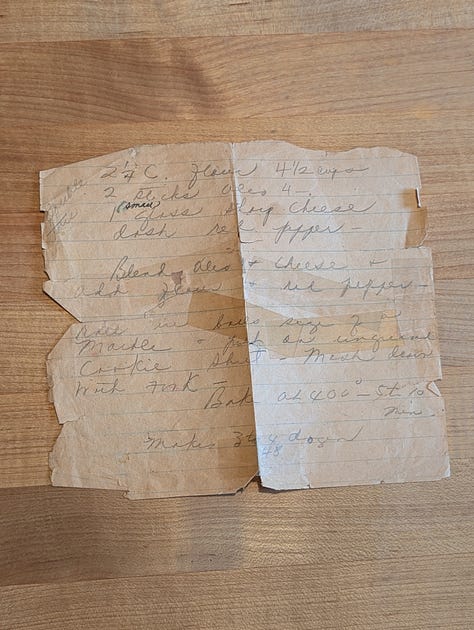
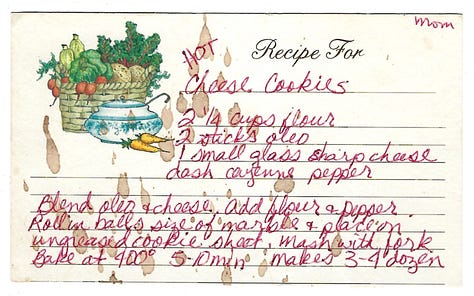
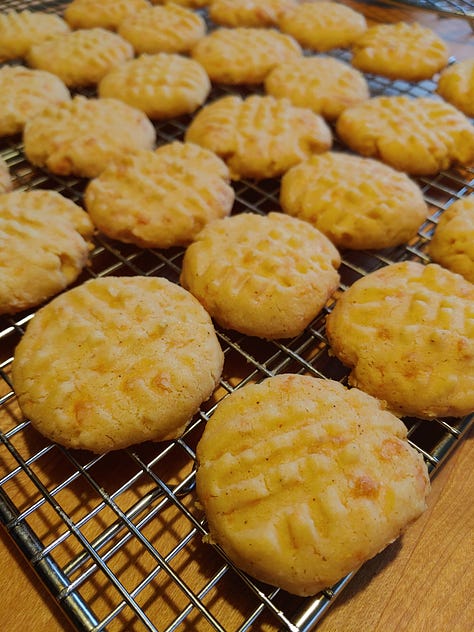
Seattle chef and restaurateur Renee Erickson has an outstanding new cookbook that was recently released, Sunlight and Breadcrumbs. In it she reflects on a number of influences in her culinary life, including art, travel, seasonal foods of the Northwest, childhood memories, and her parents. (Renee, who majored in art at the University of Washington, also includes some of her artwork in the book, and took the photos as well. She’s a powerhouse!)
On this subject of beloved recipes and how much or little we might want to update them, I was really taken with how Renee pays tribute to her mom in these three recipes:
In a recipe she calls “1970s Mom’s Mayo-Slathered Salmon,” it’s a full embrace of the past and the glories of good mayo. Aside from baking instead of grilling, this seems to be a direct reflection of her mom’s original approach.
With “Tribute to Mom’s Potato Salad,” Renee says it’s a riff on her mom’s classic; she skips the pickles and hard-boiled egg, and uses “a more charismatic mustard [grainy instead of yellow] and my usual tornado of French-y herbs.” A recipe inspired by her mom, with a good dose of her own style.
And among desserts is “Shirlee’s Brownies, Hold the Nuts,” in which she praises her mom’s finesse with the ideal brownie Renee grew up with, offering a “slightly streamlined” version of the recipe that has a couple light updates, including skipping the nuts unless she has particularly great nuts on hand to use.
A Virtual Recipe Swap, what a fabulous idea
I’ve mentioned Amie McGraham’s great newsletter Cook & Tell before, if you haven’t subscribed yet you definitely should. Given the value I place on my mom’s recipe folder and the rich connection it holds for me, I love reading her stories that reflect on her mom’s past writings about food (if I remember correctly Amie is a third-generation food writer) and adding some of her own perspectives.
This recent post from Amie I found just so compelling, I love the invitation for us to be part of a Virtual Recipe Swap—sending in a favorite recipe card with the story behind it. This echoes the approach to her fabulous book Secret Recipes: Recipe Microstories she put out last fall. I had to laugh at her reference to the “true culinary art” of squeezing a recipe onto those little recipe cards—something I reflected on in a recent issue. Embracing recipe boxes comes with the embracing the recipe card, exercises our skills in succinct-but-complete writing of recipe info in those space constraints. I practice that a bit here below.
Cheese Cookies
This is a recipe I remember my mom making for virtually every party my parents hosted at our house when I was a kid. Granted, the original recipe calls for oleo and “one small glass of sharp cheddar cheese,” so I’ve updated a bit to use butter and grated sharp cheddar instead. Plus, I made slight edits for clarity and added detail.
I was going to cheat and just provide you with a typed-out version of the recipe here, taking advantage of the no-space-limitations glory. But realized I need to work on my recipe card writing game, so here you go.

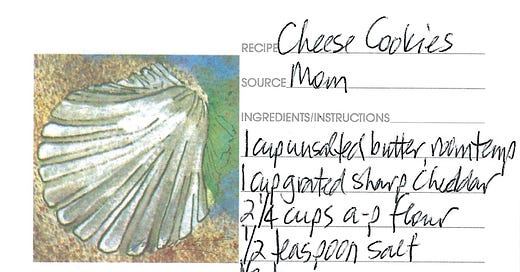


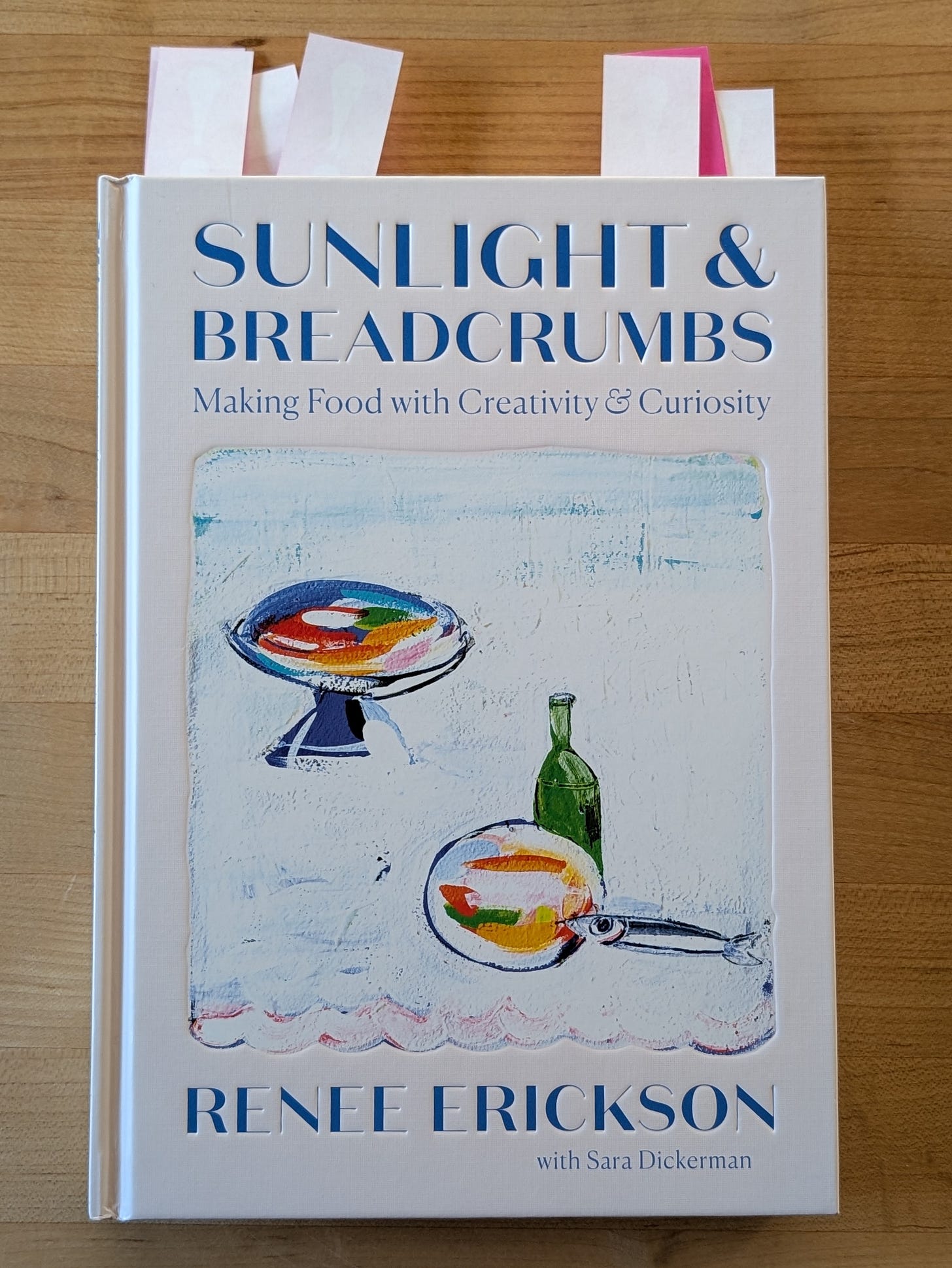

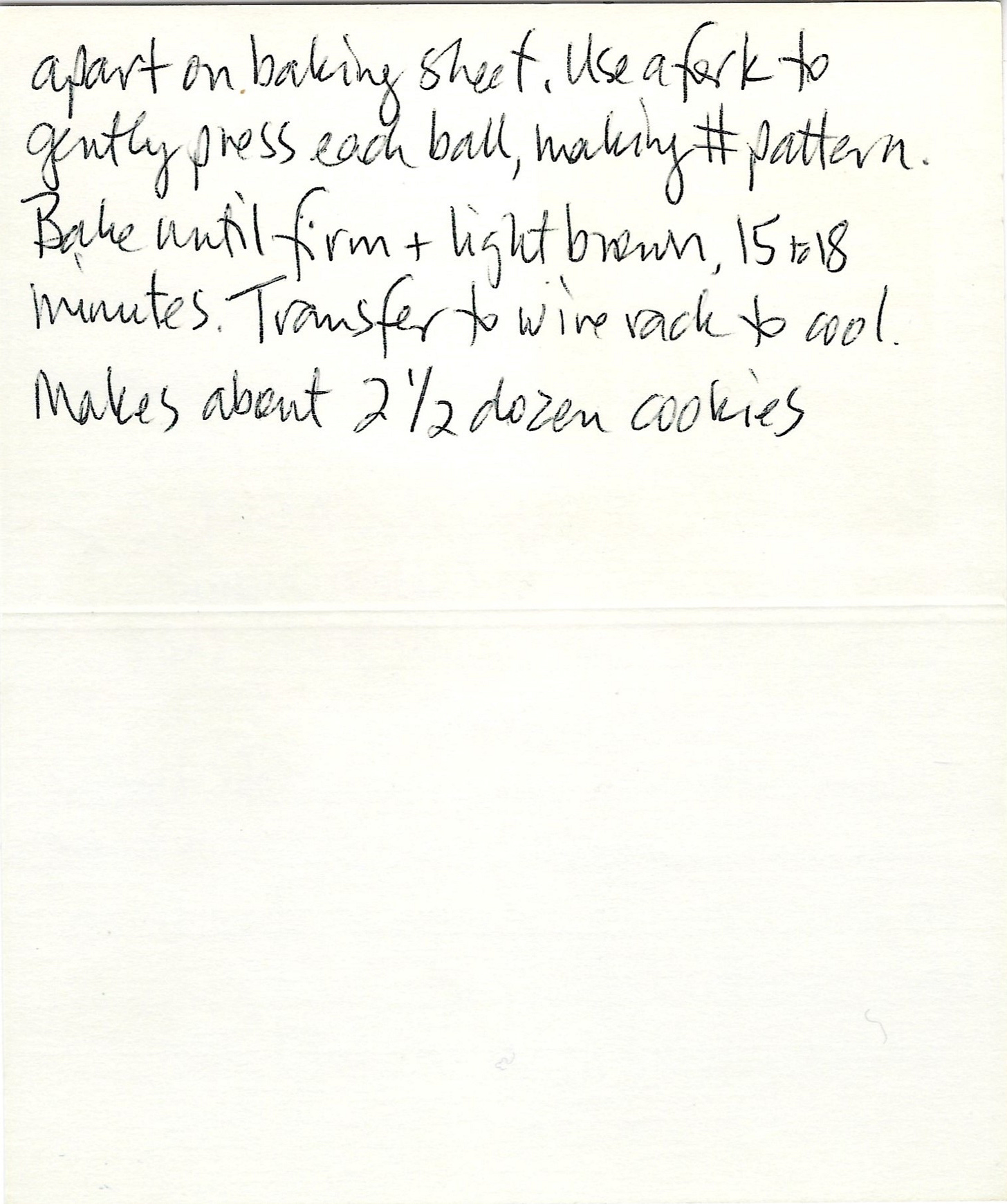
Dearest Cynthia, I've just gone down a Watson Kennedy rabbit hole!
"However much, or little, the original recipe gets updated, one thing is—to me—unequivocal: save the original."
I agree! From an archivist perspective, the original document retains its value as an object even when copies are made, especially when those copies are digital instead of physical. From an historian perspective, saving the original is also an important form of validation of its contents, which is especially important when later generations of cooks do want to or have to make modifications like ingredient swaps.
Of course, I do recognize that there's an argument to be made on the side of scanning the thing and throwing it out when you have limited space or means of keeping old documents safe... and many people just don't have that kind of storage at home!
The value of saving things like magazine clippings of recipes that were never made in the first place is a whole other discussion (one we're currently dealing with, too, when it comes to a grandmother's extensive-yet-barely-used cookie recipe collection), but when a document is determined to be worth keeping, I think that keeping the original IF storage allows is a good practice.